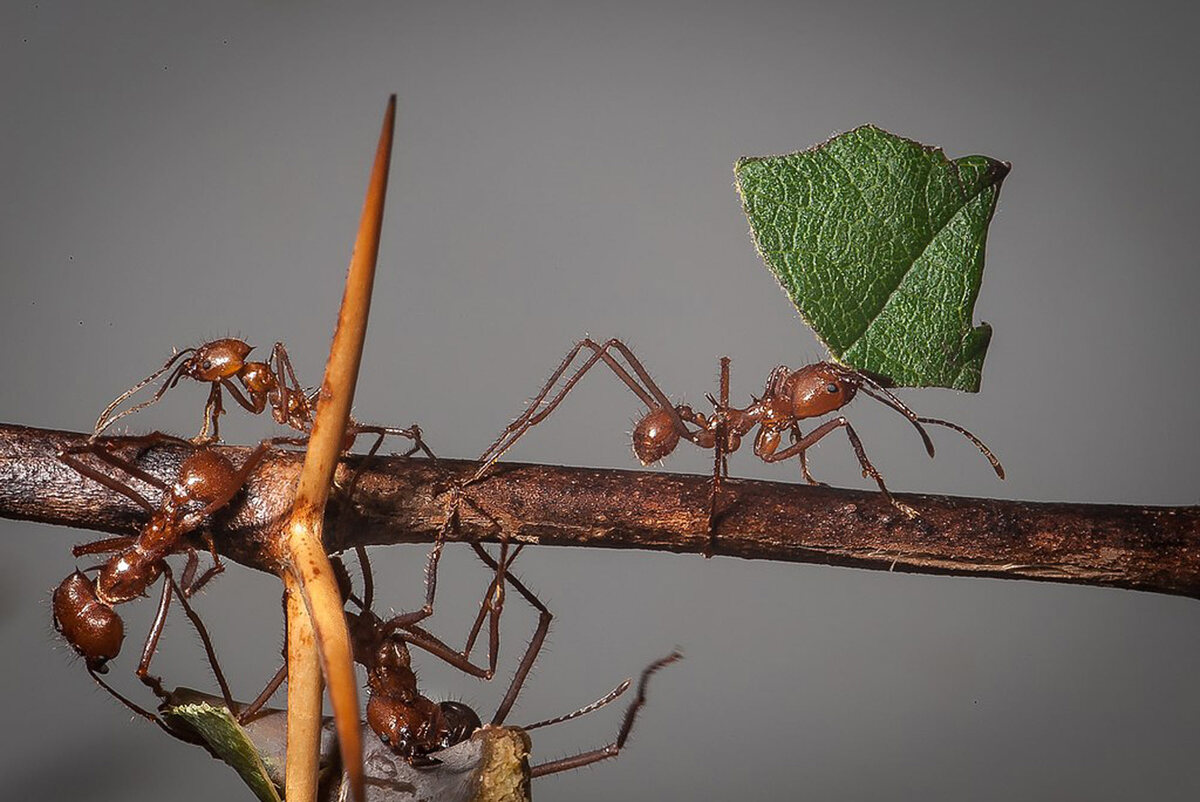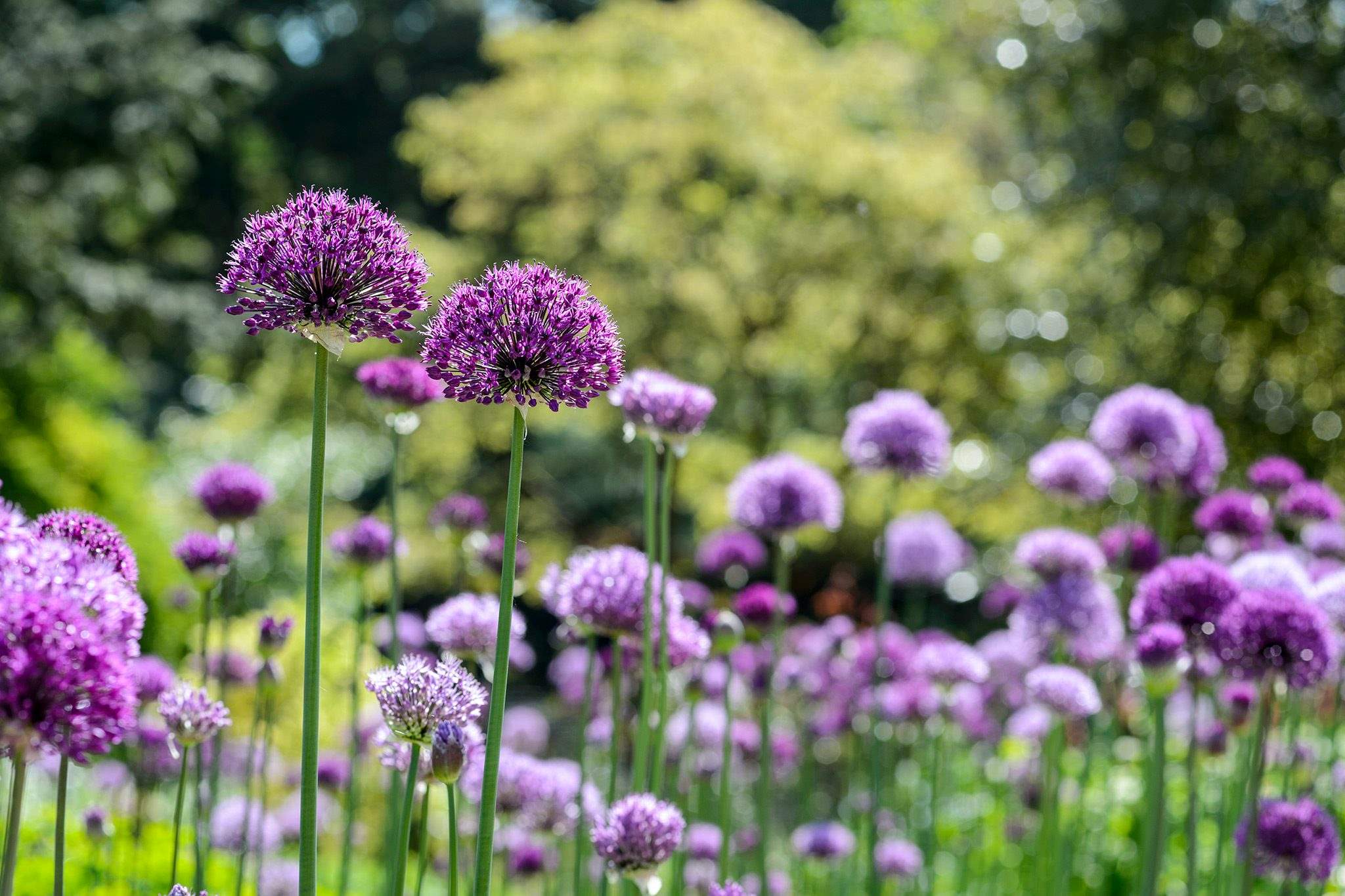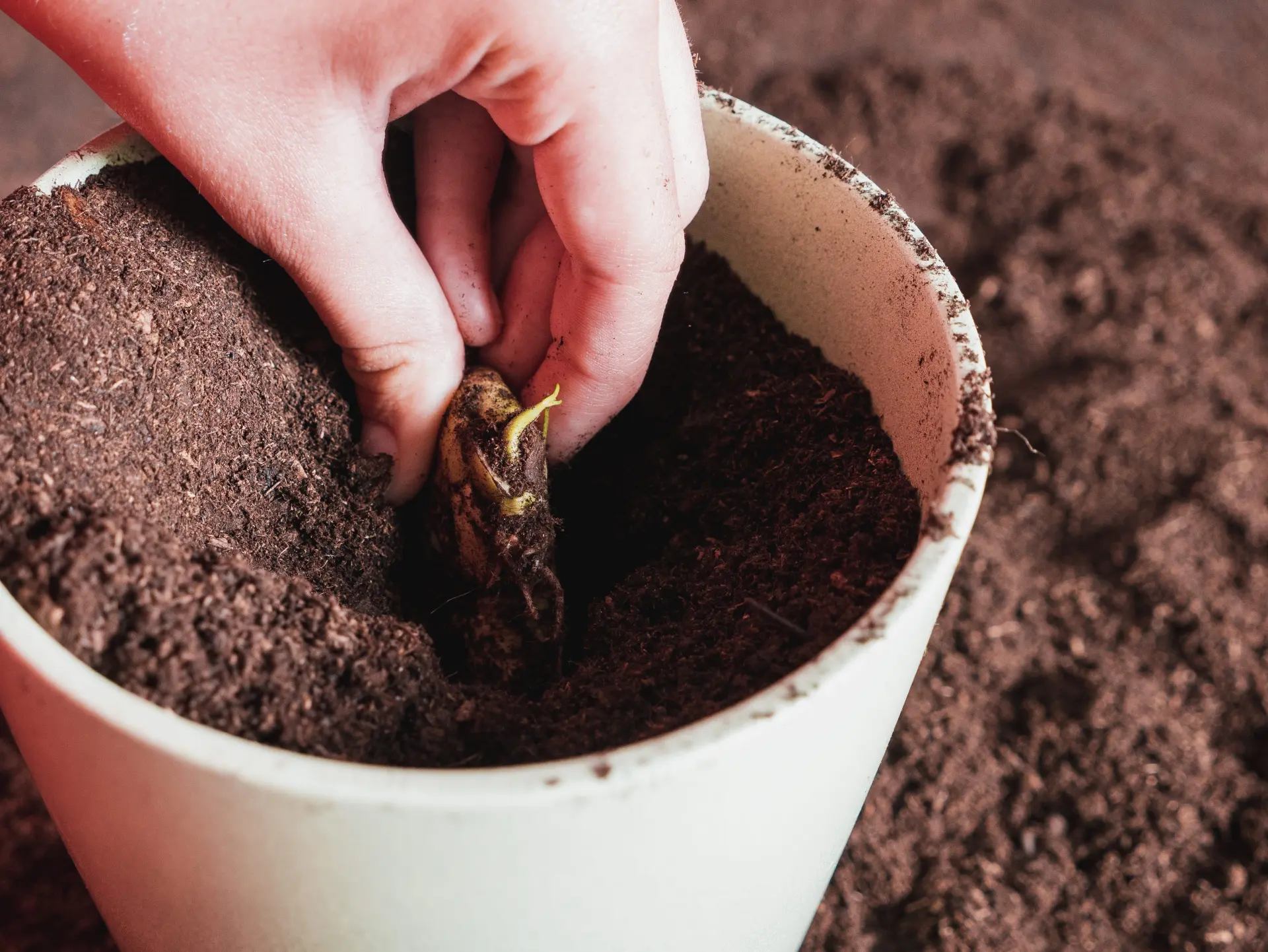Home>Gardening News and Trends>Latest News>In What Way Are Insects And Humans Similar


Latest News
In What Way Are Insects And Humans Similar
Modified: January 22, 2024
Discover the intriguing similarities between insects and humans in the latest news. Explore the surprising connections and shared characteristics that exist between these two species.
(Many of the links in this article redirect to a specific reviewed product. Your purchase of these products through affiliate links helps to generate commission for Chicagolandgardening.com, at no extra cost. Learn more)
Table of Contents
Introduction
When we think about the animal kingdom, we often categorize species into distinct groups based on shared characteristics. Insects and humans may seem worlds apart, as one belongs to the vast class of invertebrates while the other represents the pinnacle of vertebrate evolution. However, despite the apparent differences in size, shape, and complexity, insects and humans share surprising similarities in various aspects of their existence.
From physical characteristics to social behavior, cognitive abilities to sensory perception, insects and humans display remarkable parallels. Both groups have evolved unique adaptations that enable them to survive and thrive in their respective environments. While humans have undoubtedly achieved incredible advancements through technology and culture, insects have been successful in their own right for millions of years.
In this article, we will explore the fascinating ways in which insects and humans are similar. By examining their shared traits and behaviors, we can gain a deeper understanding and appreciation for the interconnectedness of life on our planet.
Physical Characteristics
One of the most apparent similarities between insects and humans lies in their physical structures. Despite the vast differences in size and shape, both insects and humans share a common framework composed of rigid skeletal systems. In humans, this framework consists of bones, while insects possess an exoskeleton made of chitin.
Another striking similarity is the presence of appendages that facilitate movement. Humans have limbs, including arms and legs, which allow us to perform a wide range of actions. Insects, on the other hand, have multiple pairs of jointed legs that enable them to navigate their environment with precision. These legs can be specialized for various functions, such as crawling, jumping, or swimming.
Furthermore, both insects and humans possess a highly developed nervous system. Humans have a complex network of neurons and a centralized brain, while insects have a simplified version of this with a distributed network of ganglia. This allows both groups to process sensory information and respond to stimuli in their environment.
Additionally, insects and humans share a similar reproductive system. In both cases, it involves the fusion of sperm and egg cells to create offspring. While humans reproduce internally, insects typically lay eggs externally. However, the underlying process of genetic recombination and the passing of traits from one generation to the next are fundamentally similar.
In summary, despite the differences in size and structure, insects and humans share fundamental physical characteristics. These similarities reveal the remarkable interconnectedness of life on Earth and the universal principles that govern our existence.
Sensory Perception
Both insects and humans rely on their sensory systems to navigate and understand the world around them. While the exact mechanisms and range of sensory perception differ, there are clear similarities in how insects and humans sense their environment.
Humans rely primarily on their five senses: sight, hearing, touch, taste, and smell. Our eyes enable us to perceive colors, shapes, and depth, while our ears allow us to detect sound waves. The sense of touch allows us to feel physical sensations, while taste and smell work together to enhance our perception of flavors and odors.
Insects, although they may not possess the same range of senses as humans, have their own set of sensory abilities. Vision is highly developed in many insects, with some species having compound eyes that provide a wide field of view. They can perceive colors, movement, and patterns, which is crucial for foraging, mating, and predator avoidance.
In addition to vision, insects often have specialized sensory structures, such as antennae or palps, which allow for the detection of chemicals and pheromones. These chemical cues play a vital role in communication, mating, and locating food sources.
Both insects and humans also possess a sense of touch, although it may be more refined in humans. Insects have sensory receptors on their legs and antennae that allow them to detect physical contact, vibrations, and temperature changes in their environment.
While humans may have a more sophisticated range of sensory perception, it is fascinating to see how insects have evolved specialized senses to thrive in their own unique habitats. The similarities in sensory perception between insects and humans underscore the importance of understanding and adapting to the environment we inhabit.
Reproduction and Growth
Reproduction and growth are fundamental aspects of life for both insects and humans. While there are notable differences in the reproductive strategies and development processes, there are also intriguing similarities in these fundamental biological functions.
In humans, reproduction involves the fusion of sperm and egg cells through sexual reproduction. Following fertilization, the embryo develops within the mother’s womb, nourished by a placenta until birth. Humans have a relatively long gestation period, typically around nine months, and their offspring are born in a highly dependent state, requiring care and nurturing for an extended period.
Insects, on the other hand, employ various reproductive strategies and exhibit a diverse range of life cycles. Some insects, like butterflies, undergo a complete metamorphosis. They start as eggs, hatch into larvae (caterpillars), undergo pupation, and eventually emerge as adult insects. Others, like grasshoppers, go through incomplete metamorphosis, where they resemble miniature adults but gradually go through molting stages to reach their fully developed form.
The reproductive processes in insects also vary. Many species rely on sexual reproduction, where males and females come together for mating. In some cases, females store sperm from multiple matings and use it to fertilize their eggs over time. There are also instances of asexual reproduction in insects, such as parthenogenesis, where females can produce offspring without the need for fertilization.
Interestingly, both insects and humans invest significant energy into the growth and development of their young. Humans provide care and support to their offspring, ensuring they receive proper nutrition, education, and protection. Insects also exhibit parental care in varying degrees, with some species guarding and protecting their eggs or providing nourishment for their developing young.
In summary, while the reproductive strategies and growth processes differ, insects and humans share common ground in terms of the importance placed on reproduction and the care invested in the growth and development of offspring. These shared aspects highlight the universal significance of continuation of life and the diverse evolutionary strategies that have emerged to ensure reproductive success.
Social Behavior
Social behavior is a prominent aspect of both insect and human societies. While the complexity and scale of social interactions may differ, there are striking similarities in the way insects and humans organize and interact within their respective communities.
Humans are known for their highly complex social structures, characterized by intricate hierarchies, cooperation, and division of labor. We form families, communities, and societies, relying on interpersonal relationships, communication, and mutual support for survival and advancement. Humans have developed intricate systems of social norms, values, and institutions that govern our interactions and shape our identities.
Insects, too, exhibit a remarkable range of social behaviors. Some species, like ants and bees, live in large colonies with specialized roles and tasks assigned to different members. These social insects communicate through chemical signals, vibrations, and pheromones, coordinating their activities for the greater good of the colony. Social insects display division of labor, with individuals performing specific roles such as foraging, nursing the young, defending the nest, or reproducing.
Furthermore, insects and humans both engage in cooperative activities. Humans collaborate on complex tasks, work collectively to achieve common goals, and engage in reciprocal behaviors. Insects exhibit similar cooperative behaviors within their colonies, such as cooperative nest-building, food sharing, and collective defense.
Social behavior in both insects and humans is influenced by complex communication systems. Humans have developed intricate verbal and non-verbal communication methods, including language, facial expressions, body language, and gestures. Insects primarily use chemical signals, vibrations, and visual displays to communicate information such as food availability, danger, or reproductive readiness.
While the scale and complexity of social interactions may differ between insects and humans, the underlying principles of cooperation, division of labor, and communication are remarkably similar. Both insects and humans have evolved social behaviors to enhance their chances of survival, reproduction, and successful adaptation to their respective environments.
Communication
Communication is a vital aspect of life for both insects and humans, enabling individuals to convey information, coordinate actions, and form social bonds. While the methods and complexity of communication may vary, there are intriguing similarities between how insects and humans exchange information.
Humans have developed a highly sophisticated system of communication, primarily through language. We use spoken and written words, gestures, facial expressions, and body language to express our thoughts, emotions, and intentions. Language allows us to convey complex ideas, convey abstract concepts, and engage in elaborate social interactions.
Insects, although lacking a spoken language, have evolved alternative forms of communication. Chemical signals play a vital role in insect communication, with the release of pheromones allowing individuals to attract mates, mark territory, or communicate danger. In addition, insects use visual displays, such as colorful patterns or rhythmic movements, to signal aggression, submission, or courtship.
Both insects and humans also rely on auditory communication to some extent. Humans communicate through spoken words and vocalizations, while insects produce sounds by rubbing body parts together or vibrating specialized structures. Examples of insect auditory communication include the chirping of crickets or the buzzing of bees.
Another form of communication shared by insects and humans is tactile interaction. Humans use touch to convey affection, comfort, or convey messages through gestures like handshakes or hugs. Insects also engage in tactile communication, with species like ants using antennae to touch and exchange chemical signals with nestmates.
It is fascinating to observe these parallel forms of communication between insects and humans, illustrating our shared need to convey and interpret information. Despite the differences in complexity and modality, both insects and humans rely on communication to navigate the social landscape, coordinate activities, and fulfill their biological and social needs.
Cognitive Abilities
Cognitive abilities refer to the mental processes and capacities that enable organisms to perceive, learn, think, and solve problems. While the cognitive abilities of insects and humans differ in complexity, there are remarkable similarities that highlight the shared capacity for learning and adaptation.
Humans possess highly developed cognitive abilities, including higher-order thinking, reasoning, and problem-solving. We have the capacity for abstract thinking, language comprehension, and the ability to create and manipulate complex mental representations. Humans also excel in long-term memory, allowing us to retain and recall vast amounts of information.
Insects, despite possessing smaller brains and simpler nervous systems, exhibit surprising cognitive abilities. Research has revealed that certain insect species, like bees and ants, display impressive learning and memory capabilities. They can remember complex spatial information, recognize specific individuals within their colonies, and navigate intricate foraging routes.
In addition to learning and memory, insects also demonstrate problem-solving abilities. For example, some species use visual or olfactory cues to locate food sources or navigate through complex environments. Insects can also exhibit behavioral flexibility and adapt their actions based on changing environmental conditions.
While the cognitive abilities of insects may not match the complexity of human cognition, the similarities between the two highlight a shared capacity for learning, memory, and adaptation. Both insects and humans have evolved cognitive abilities that enable us to interact with and respond to our surroundings in ways that enhance our survival and success.
Adaptation and Survival
Adaptation and survival are crucial concepts in the realms of both insects and humans, as both groups have successfully evolved and thrived in diverse environments. While the mechanisms and strategies may differ, insects and humans share fundamental principles of adaptation and survival.
Humans possess the remarkable ability to adapt to various environmental conditions through cultural innovation and technological advancements. Our capacity for learning, problem-solving, and cooperation has allowed us to thrive in a wide range of habitats around the globe. Moreover, our ability to shape our environment and utilize tools has significantly enhanced our chances of survival.
Insects, on the other hand, have achieved remarkable success through their evolutionary adaptations. They have diversified into numerous ecological niches, spanning lands, seas, and skies. Insects have evolved specialized adaptations for tasks such as pollination, mimicry, camouflage, and defense. These adaptations enable them to exploit available resources, evade predators, and reproduce effectively.
Both insects and humans undergo natural selection, where traits favorable for survival and reproduction are passed on to future generations. Humans have the advantage of cultural evolution, which allows us to accumulate knowledge and adapt rapidly. Insects, on the other hand, exhibit genetic evolution at a remarkable pace, with adaptations appearing over short periods due to their high reproductive potential.
Survival for both insects and humans also depends on the ability to respond and adapt to environmental changes. Humans have developed sophisticated strategies to mitigate the impact of environmental challenges, such as building shelters, developing agriculture, and harnessing energy sources. Insects, on the other hand, can exhibit remarkable phenotypic plasticity, allowing them to adjust their behavior, physiology, and life cycle in response to changing conditions.
Both insects and humans showcase the incredible diversity and resilience of life on Earth. While humans may have greater control over our environment, the evolutionary success of insects demonstrates the effectiveness of their adaptations. Understanding and appreciating the adaptation and survival strategies of both insects and humans shed light on the intricacies and wonders of the natural world.
Role in Ecosystems
Insects and humans play crucial roles in the complex web of life within ecosystems. While humans often have a significant impact on ecosystems, insects are essential contributors to ecosystem functioning and balance.
Insects serve as key pollinators for many plant species, playing a crucial role in the reproduction and diversity of flowering plants. Bees, butterflies, and other insects transfer pollen from flower to flower as they forage for nectar, facilitating fertilization and the production of seeds and fruits. This vital service supports the growth of various plant communities and provides food sources for other animals.
In addition to pollination, insects play a crucial role as decomposers. Insects such as beetles, ants, and flies break down organic matter, aiding in the recycling of nutrients and the decomposition of dead plants and animals. Through their feeding habits, insects contribute to the nutrient cycle and help maintain the overall health of ecosystems.
Insects also serve as a vital food source for numerous animals, including birds, reptiles, amphibians, and mammals. Their abundance and diversity make them a reliable and accessible source of energy for many creatures. In turn, insect consumption by predators helps regulate insect populations and maintain ecological balance.
Humans, too, have an impact on ecosystems. While our actions can have negative consequences on biodiversity and ecosystem health, we also have the capacity to understand and mitigate these impacts. Through conservation efforts and sustainable practices, humans can help preserve insect populations and protect the balance of ecosystems.
Recognizing and valuing the essential role of insects in ecosystems is crucial for the sustainability and well-being of our planet. By understanding the intricate connections between insects, plants, and other animals, we can work towards preserving biodiversity and maintaining the health and resilience of ecosystems.
Impact on Human Life
Insects have a significant impact on human life, influencing various aspects of our existence. While some of these impacts may be detrimental, others are beneficial and essential for our well-being.
One of the most noticeable impacts of insects on human life is in the realm of agriculture. Insects, both beneficial and harmful, play a crucial role in crop pollination and pest control. Bees, for instance, are essential pollinators for many fruits, vegetables, and nuts, contributing to the productivity and diversity of agricultural systems. On the other hand, certain insect pests, such as aphids or caterpillars, can damage crops and reduce yields, leading to economic losses for farmers.
In addition to agriculture, insects also have significant implications in the realm of public health. Some species, like mosquitoes, transmit diseases such as malaria, dengue fever, and Zika virus, posing a risk to human health. On the other hand, certain insects, such as ladybugs and lacewings, act as natural predators, helping control populations of disease-carrying insects like mosquitoes or crop-damaging pests.
Insects contribute to our economy through various industries. Silk production from silkworms, honey production from bees, and shellac production from lac insects are just a few examples of how insects provide valuable resources and opportunities for livelihoods. In addition, insects also play a role in waste management and recycling, as they are involved in the breakdown of organic matter.
Furthermore, insects have cultural and aesthetic significance. They feature prominently in art, literature, folklore, and mythology across different cultures. Butterflies, dragonflies, and beetles, with their vibrant colors and intricate designs, have long mesmerized and inspired human creativity. Insects also serve as important educational tools, allowing us to study and learn about the complexities of the natural world.
It is important to recognize both the positive and negative impacts of insects on human life. By understanding their role in agriculture, public health, economy, and culture, we can work towards harnessing their benefits while managing their adverse effects. Striking a balance between coexistence and sustainable management is essential for fostering harmony between humans and insects.
Conclusion
Insects and humans may be vastly different in many respects, but upon closer examination, we discover remarkable similarities between these two groups. From physical characteristics to cognitive abilities, insects and humans share fundamental traits that highlight the interconnectedness of life on Earth.
Both insects and humans have adapted to their environments through evolutionary processes, demonstrating remarkable resilience and ingenuity. They exhibit complex social behaviors, communicate in various ways, and display cognitive abilities that enable them to navigate and thrive in their respective societies.
Insects play essential roles in ecosystems, contributing to pollination, nutrient cycling, and providing a vital food source for many animals. They impact human life in numerous ways, influencing agriculture, public health, and even cultural aspects. Recognizing the significance of insects is key to preserving biodiversity, promoting sustainable practices, and fostering a harmonious coexistence between humans and the natural world.
By delving into the similarities and interconnectedness between insects and humans, we gain a deeper appreciation for the web of life and the diverse strategies employed by living organisms to adapt, survive, and thrive. Understanding and preserving the natural world, with all its magnificent diversity, is not only crucial for the well-being of insects and humans but also for the overall health and sustainability of our planet.




